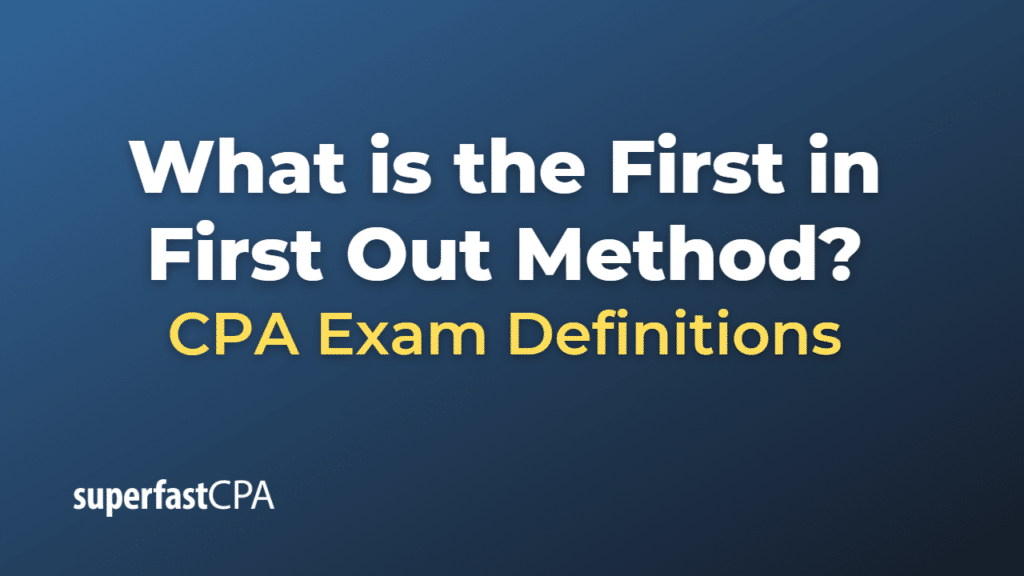First in First Out Method
First-In, First-Out (FIFO) is an inventory valuation method used by companies to calculate the cost of goods sold (COGS) and ending inventory. It’s based on the assumption that the first goods purchased or produced (the oldest inventory) are the first to be sold.
FIFO reflects the common business practice where companies aim to sell older inventory first to avoid obsolescence or spoilage issues. This method is particularly relevant in industries where products have a limited shelf life, like food, beverages, and certain pharmaceutical products.
For example, let’s consider a grocery store:
If the grocery store receives a shipment of 100 apples at $1 each on Monday and another shipment of 100 apples at $1.10 each on Tuesday, and then it sells 150 apples during the week, the cost of goods sold using the FIFO method would be calculated as follows:
- The first 100 apples sold are assumed to have come from the Monday shipment, so they’re valued at $1 each for a total cost of $100.
- The next 50 apples sold are assumed to have come from the Tuesday shipment, so they’re valued at $1.10 each for a total cost of $55.
So, the total cost of goods sold for the week using the FIFO method is $155 ($100 + $55).
The remaining 50 apples in inventory would be valued at $1.10 each from the Tuesday shipment (the newer cost), for a total value of $55.
This example demonstrates the FIFO inventory valuation method and how it affects the cost of goods sold and ending inventory. It’s important to note that this method has a significant impact on a company’s financial statements, particularly in times of inflation or deflation, as it can affect the company’s reported income, income tax, and inventory valuation.
Example of the First in First Out Method
Let’s consider an example involving a car dealership, which we’ll call AutoShop. This company purchases cars from manufacturers and sells them to customers. Here’s a timeline of their purchases and sales over three months:
Month 1: AutoShop purchases 10 Model X cars at a cost of $20,000 each.
Month 2: AutoShop purchases another 10 Model X cars, but due to increased manufacturing costs, the cost is now $21,000 each.
Month 3: AutoShop sells 15 Model X cars to customers.
Under the First-In, First-Out (FIFO) method, the cars purchased first (in Month 1) are assumed to be the ones sold first. Here’s how we calculate the cost of goods sold (COGS) and ending inventory:
Cost of Goods Sold (COGS): AutoShop sold 15 cars. The first 10 cars are assumed to come from the Month 1 purchase, and the next 5 cars are assumed to come from the Month 2 purchase.
So, the COGS calculation is as follows:
- 10 cars (from Month 1) at $20,000 each = $200,000
- 5 cars (from Month 2) at $21,000 each = $105,000
Total COGS = $305,000
Ending Inventory: AutoShop still has 5 cars left from the Month 2 purchase. So, the ending inventory is:
- 5 cars (from Month 2) at $21,000 each = $105,000
So, under the FIFO method, AutoShop reports a COGS of $305,000 and ending inventory of $105,000 for these three months.
This example illustrates how the FIFO method works in practice. This method can have significant implications for a company’s financial reporting, especially in periods of inflation or deflation. In an inflationary period, like this example, FIFO will result in a lower COGS and higher net income compared to other methods like LIFO (Last-In, First-Out).













